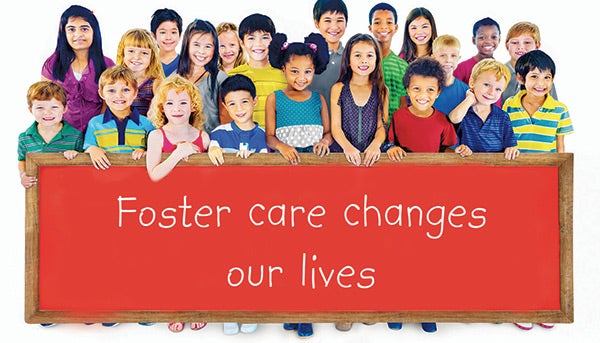Study: Foster kids get better, still struggle with behavior
Published 12:00 am Friday, July 29, 2016
A new study shows that the well-being of children in foster care improves, but some kids still struggle with behavioral issues.
The research came from Kids Insight, a nonprofit grantee of the Casey Foundation.
They used a Treatment Outcome Package Questionnaire, which is an assessment tool on child well-being, to measure how children, on average, were doing when they went into foster care compared to how they were faring at defined points after being in care.
“The insights provided by TOP are pretty amazing,” said Tracey Field, director of Casey’s Child Welfare Strategy Group. “While improvements are small, they exist and in many cases are statistically significant.”
TOP scores for 655 children ages 3-13 showed statistically significant improvement for those who struggled with resilience and eating issues. Meanwhile, outcomes are trending in a positive direction for depression, separation anxiety, suicidality, lack of assertiveness and violence.
“Resilience is an important quality for kids,” says David R. Kraus, TOP developer and chief scientific officer of Kids Insight. “Kids who are not resilient may be challenging. They may struggle to get along, follow rules and share their lives with others. For teens in child welfare systems, the challenges are different. These kids have more behavior-based issues. They are more likely to act out.”
Locally, DHR director Lesa Syler said the benefits of a foster care placement are often hard to measure.
“Immediate benefits that we – social workers and foster parents – observe include the fact that children are safe from the situation that led to their foster care placement, and their basic needs, such as food, clothing and shelter, are provided,” she said. “Over a few months, we also begin to observe other benefits, such as improvements in academics and the children’s overall physical and emotional health.”
Syler said while children are in foster care in Covington County, her department strives to provide services that enable the parents to provide safe and stable environments for the children.
“When the parents are successful in making these changes, the ultimate benefit to the children is that they are able to reunite safely with their parents,” she said. “When reunification with their parents isn’t possible, we strive to provide the children with an alternative permanent, safe home. This goal is often achieved through adoption. The positive outcomes for children that occur when they have a safe, permanent home, whether with their parents or in an adoptive home, are substantial and long term.”
Kraus said that for teens in child welfare, the challenges are different.
“These kids have more behavior-based issues,” he said. “They are more likely to act out.”
Still, about 75 percent of those children had no or just one behavioral problem.
The organization said the main benefit of the data is to allow those who work with foster children to be able to identify fixable problems such as reducing placement disruptions. They attribute frequent moves in teens to a higher level of acting out.
“That should challenge all of us to figure out how to stop that cycle,” Field said.





